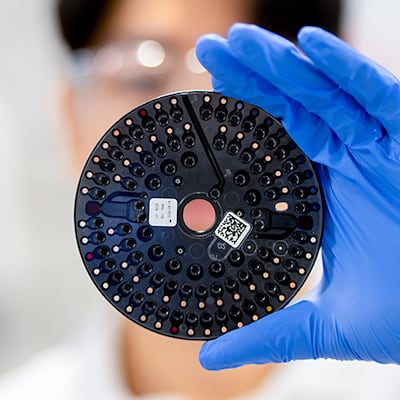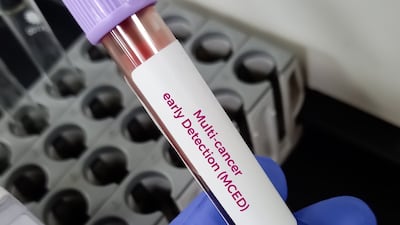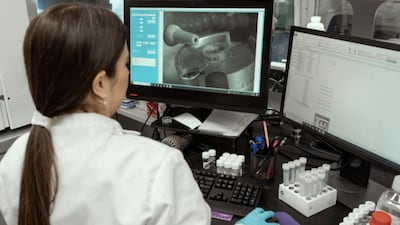Diagnostics
The rise and fall of US tariffs and the chill headwind from China’s state procurement policies have blown onto medtech’s radar. But how to monetize AI is the dominant concern up and down the industry.
Freenome will combine with Perceptive Capital Solutions Corp in a SPAC deal worth $330m. The goal is to advance Freenome’s blood-based tests for early detection of cancer and, in 2026, launch its advanced colorectal cancer detection test SimpleScreen, currently under FDA review.
AdvaMed Backs Bill That Would Create ‘Consistent’ Reimbursement Pathway For Algorithm-Based Services
Pending legislation in the US House of Representatives would allow Medicare patients to benefit from some of the latest and most innovative technologies. The bipartisan bill would establish a clear pathway for reimbursement for algorithm-based healthcare services approved by the FDA.
Truvian reached a major milestone with the FDA clearance of its blood-testing benchtop but is awaiting further FDA clearances of blood panels before a full launch in the second half of 2026.
In September, the US FDA asked the public to weigh in on how AI-enabled medical devices perform in real-world settings. With the comment period now closed, the agency has heard back from dozens of stakeholders on how the agency can use clinical outcomes to better understand these devices.
Medtech funding in 2025 sees a trend of fewer, yet larger deals with total funding of $3.6bn in Q1, $2.6bn in Q2 and $2.9bn in Q3, said LSI’s Nick Talamantes. In 2026, he expects a continued investor focus on more mature firms in areas of oncology, cardiology and neurology.
A recent study demonstrates that certain types of blood-based tests that screen for multiple cancers at once have the potential to flip the script on cancer diagnoses, including some of the deadliest types.
Entering the liquid biopsy market with a new technology remains challenging. Rarity Bioscience CEO Linus Bosaeus, is confident his company’s superRCA could help unlock the true potential of precision medicine as pharma looks more to minimal residual disease as an oncology endpoint.
Abbott will acquire Exact Sciences for $21bn, which marks the largest such deal ever in the diagnostics space. The deal will allow Abbott to enter the fast-growing $60bn US cancer screening market.
Hallucinations are a common problem in AI and pose significant challenges to medical devices powered by the technology. A paper authored by several FDA staffers argues that focusing on how hallucinations impact patients is the best approach.
A California jury found in favor of device firm Masimo in a long-running legal battle against the tech giant. Apple has already announced plans to appeal.
Brain-computer interfaces advance toward trials and commercialization, Oura pushes for FDA-cleared blood pressure monitoring, and regulators weigh AI’s expanding role in mental health and diagnostics amid rising safety concerns.
Viome’s CEO To Expand Into Clinical Diagnostics ‘For Which There Are No Solutions’ With AI, RNA Test
Viome Life Sciences accelerates its push into clinical diagnostics with studies in colorectal cancer and a major partnership with Microsoft to scale its molecular data analysis platform. Viome leverages RNA analysis and AI to detect disease at the molecular level and personalize preventive health.
Delfi Diagnostics is preparing for pivotal trial results that could support FDA approval and reimbursement for its fragmentomics-based lung cancer screening test. Early data suggest strong potential to improve screening uptake and expand access to early detection.
After rolling out its hair-based autism diagnostic across the US, LinusBio is expanding into Japan and testing its “molecular movie” technology for ALS and other neurological disorders, aiming to deliver the first objective biomarkers in pediatric and neuropsychiatric care.
US FDA inspections of three Philips manufacturing sites earlier this year resulted in a September warning letter that claimed the company was not in conformity with current good manufacturing practices. Philips says it is addressing the agency’s concerns and working to enhance its quality systems.
Astrin Biosciences To Launch First Blood-Based Test For Early Breast Cancer Detection, Dense Breasts
Astrin Biosciences will debut Certitude, a proteomics-based blood test for women with dense breasts, aiming to detect early breast cancer with MRI-like accuracy and outperform current supplemental imaging.
Two recent warning letters from the US FDA provide the companies with 30 business days to respond instead of the usual 15. Though not a regulatory requirement, the 15-day time frame has become the standard.
Wearables innovator Oura has launched a profile study aimed at helping the company secure FDA clearance for a blood pressure feature for its smart ring. Study participants will answer questions while wearing the ring, which the company plans to use to support the feature’s efficacy.
Medtech Insight sat down with Resmed’s CMO Carlos Nunez at HLTH USA to discuss the sleep giant’s continued push from medtech into healthtech and its efforts to fix what he calls a “broken pathway” to diagnosis and treatment for millions with undetected sleep apnea.




















